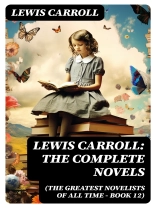In ‘Lewis Carroll: The Complete Novels, ‘ readers are invited to explore the enchanting worlds crafted by the celebrated Victorian author known for his whimsical imagination and playful use of language. This compilation features the beloved tales of ‘Alice’s Adventures in Wonderland’ and its sequel, along with ‘The Hunting of the Snark’ and other notable works. Carroll masterfully blends fantasy and absurdity, employing a unique narrative style that challenges conventional logic while engaging both children and adults. His intricate wordplay, vivid imagery, and clever characterizations reflect the broader literary movements of the time, particularly the rise of children’s literature and the surrealism that would later inform 20th-century literature. Lewis Carroll, the pen name of Charles Lutwidge Dodgson, was a mathematician, logician, and photographer, whose dual passions for formal structure and whimsical storytelling are evident throughout his oeuvre. His background in mathematics infused his writing with a sense of logic often turned on its head, as well as countless puzzles and riddles that would captivate readers’ imaginations. Carroll’s experiences as an Oxford don and his interactions with children, notably the Liddell sisters, inspired the creation of fantastical narratives that resonate with a childlike wonder. This anthology is a must-read for anyone interested in the intersections of logic, language, and imagination in literature. Carroll’s works not only entertain but also challenge readers to question reality and embrace the absurd. Aspiring and established readers alike will find joy in this comprehensive collection, celebrating a pioneer of literary nonsense whose influence endures to this day.
Circa l’autore
Lewis Carroll, born Charles Lutwidge Dodgson (1832-1898), was a distinguished English writer, mathematician, logician, Anglican deacon, and photographer. Known for his playful use of language and logic, Carroll gained enduring fame for his masterpieces ‘Alice’s Adventures in Wonderland’ and its sequel ‘Through the Looking-Glass’. These novels, included in ‘Lewis Carroll: The Complete Novels’ (The Greatest Novelists of All Time – Book 12), have not only delighted children and adults alike but have also inspired a vast range of adaptations and scholarly analyses. His inventive narrative structures, infused with fantastical characters and inventive wordplay, have significantly contributed to the genre of literary nonsense, influencing a myriad of authors and artists. Carroll’s exploration of childlike wonder and the complexities of adult life, along with his use of symbolism, puns, and logical puzzles, has garnered critical acclaim and established him as a notable figure in the literary canon. Beyond his literary achievements, Carroll’s work in mathematics and symbolic logic, although less recognized by the public, illuminates his intellectual depth and his affinity for structure and order, traits which often permeated his narratives. The enduring popularity of Carroll’s works and the ongoing scholarly interest in his life and writing underscore his monumental impact on literature and society.












